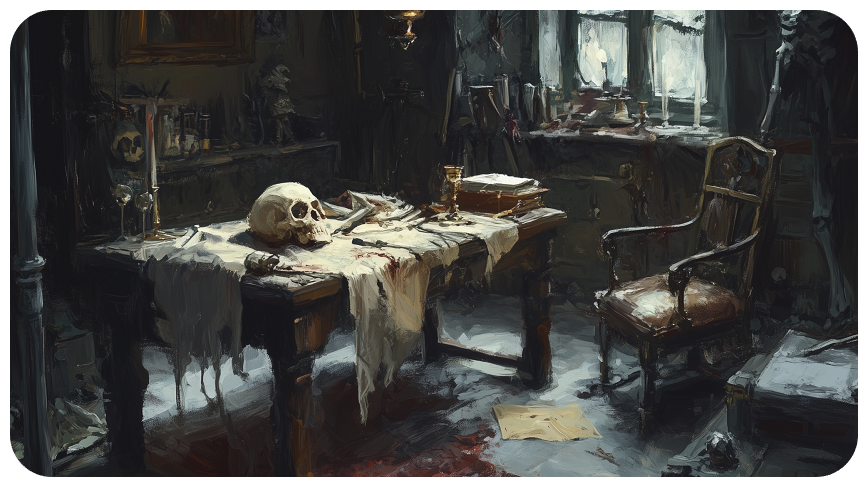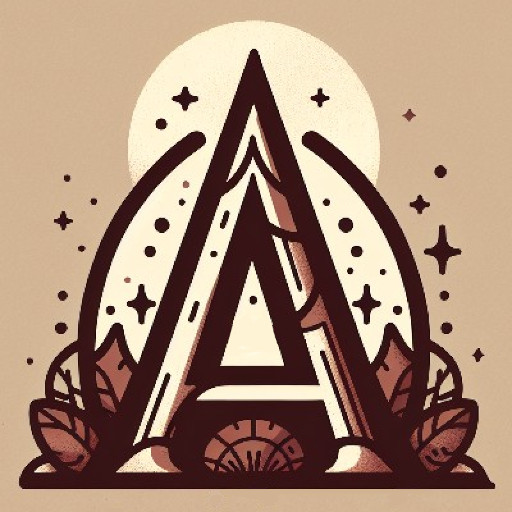More actions
Vicissitude (talk | contribs) No edit summary |
Vicissitude (talk | contribs) |
||
| Line 106: | Line 106: | ||
:The process is identical to the Rite of Growth, though the words canted ought to relate to enervation, preservation, livelihood, durability, endurance and so on instead. | :The process is identical to the Rite of Growth, though the words canted ought to relate to enervation, preservation, livelihood, durability, endurance and so on instead. | ||
====Repose==== | ====Rite of Repose==== | ||
Repose has two purposes, the first being to impose a comatose state onto a patient. | Repose has two purposes, the first being to impose a comatose state onto a patient. | ||
| Line 113: | Line 113: | ||
The second purpose of Repose is to create [[Draugr]]. | The second purpose of Repose is to create [[Draugr]]. | ||
:The process is similar to regular repose, only the meaning of the Glyphics involved is modified. Their inscriptions must be carved onto a recently deceased cadavar, and they must be painted over the entire body before the Maltrician then moves to reciting them. Channeling enough Miasmata to complete this rite is often physically draining, making it so this process cannot be repeated more than once a week. | :The process is similar to regular repose, only the meaning of the Glyphics involved is modified. Their inscriptions must be carved onto a recently deceased cadavar, and they must be painted over the entire body before the Maltrician then moves to reciting them. Channeling enough Miasmata to complete this rite is often physically draining, making it so this process cannot be repeated more than once a week. | ||
====Hemostasis==== | ====Hemostasis==== | ||
Revision as of 17:16, 1 August 2024

Malediction is a marriage of medicine and Metaphor; wielding them together, Maltricians may heal the injured, treat the sick, and sculpt the body. Malediction does not require a Minor Merit to pursue.
Malediction
HistoryMalediction is an old thing, born from the minds of curious Fae who wished to warp their bodies to suit their whimsy. Even though many of their number possessed Draoidh or Nymhea, even Seeming or Crest, to heal their wounds, to invigorate and stylize their bodies, such things were not universal– and further, none of them alone could provide the flexibility or accessibility many of their hearts desired. And thus, it was that desire which fueled their experimentations with Saol incantations that eventually lead to the creation of Vitalis.
|
Concepts
ToolsIn addition to the litany of tools utilized by a mundane chirurgeon, there are several implements specific to Malediction. These lists are for the standard tools provided in the toolkit, with both the mundane and Malediction-specific tools included. Because of how cumbersome carrying all of these things around often is, most Maltricians operate out of static offices.
Questions about technology level? Ask the setting’s Storyteller what tools your PC may have access to. Malediction’s ToolsThese tools are manufactured from one of two methods.
Mundane Surgical, Triage, & Treatment Tools
Mundane Examination Tools
Furnishings & Other ToolsListed below are other devices not tied directly to Malediction or larger furnishings that a Maltrician might invest in that don’t come with the standard toolkit. Custom, player created tools will also be featured here. Please submit custom designs to the Support Forum and they will be added once approved. Other Tools
Furnishings
Flesh RitesRite of GrowthA rite done to tissue samples within a brionic vessel in order to multiply, or grow more of, the sample or structure housed within.
Rite of EnervationThe way in which a Maltrician makes flesh more lively and durable. It may also be used to preserve limbs and organs for later use.
Rite of ReposeRepose has two purposes, the first being to impose a comatose state onto a patient.
The second purpose of Repose is to create Draugr.
HemostasisHemostatics is the process of stabilizing wounds or incisions, and blocking or encouraging the flow of blood.
NeurostasisNeurostatics is the artform of manipulating the mind of a victim through Brionic brain tattoos, encouraging or suppressing desires, specific emotions, and creating servants of ceaseless drive or outright dominating Draugr into loyal Ghouls.
Mending & Shaping The BodyShapingShaping is the art of using the shaper’s torch in combination with Malediction’s other tools to mold existing flesh into whatever the chirurgeon– or patient– desires. More often than not, shaping is used in conjunction with other techniques rather than by itself. It is typically the first Malediction technique a novice practitioner will learn. The process of shaping is as follows: the Maltrician must first ‘burn’ the tissue they intend to work on with the shaper’s torch. They may then sculpt the affected tissues as they see fit, though it should be noted that bone requires twice as much exposure to the torch’s flame for the same effect as on other tissues. It is incredibly important that the patient not be permitted to move and/or touch the affected tissues until the effects of the torch have worn all the way off. If the patient must be unconscious for a procedure, it is safest to not rouse them at all until this happens. If a Maltrician needs to treat a wound and does not have access to tissues compatible with their patients, they may utilize a Maltrician’s Dirk and extrude brionic foam over the affected area in order to ‘fill in the gaps’, so to speak. The foam will adapt to the tissues around it, though somewhat haphazardly– the result is often misshapen and lumpy in texture, requiring the Maltrician to either use a latherer or essence shapers in order to sculpt their desired result.
StitchingStitching refers to the process by which a Maltrician integrates or reintegrates briomantic matter, living or dead, into their patients. Experienced chirurgeons learning Malediction may be taught Stitching early on, though those with little medical experience at the incipience of their Maltrician training will likely have to wait a while until they gain enough medical expertise in order to perform proper surgeries. If a Maltrician has access to tissue samples, organs or body structures compatible with their patient, they may stitch the relevant structures into place using organic sutures soaked in brionics or foamed brionics extruded via a Maltricia’s dirk. If using sutures, they will melt into the flesh over the span of a few days for a seamless result. Foamed brionics must be shaped to look natural, but they are more customizable than sutures.
FleshcraftFleshcraft is the art of weaving together substances treated by brionics in order to create functional biological entities, ranging from grafts to entire appendages. A Maltrician typically utilizes a variety of tools and materials in order to create complex structures such as organs or limbs. The first step of the process, then, is to acquire their materials. For example, a Maltrician who wishes to create a functioning arm would be required to source all applicable tissue samples: connective tissue, epithelial tissue, nervous tissue and muscle tissue. They may gather their initial samples from live hosts or cadavers (which must be enervated when working with the living), though they only need to source a small amount of each type– the Rite of Growth can then be used to grow more of their samples until they acquire the desired amount. With their materials acquired, the Maltrician may then start the arduous process of composing their fleshcraft. Even at higher levels of mastery, this can be time consuming depending on the structure’s complexity. They must also pay particular attention to the anatomy of whatever they are crafting, especially if they wish to create something true-to-life. For example, paying proper attention to where nerves or sensitive tissues (like sweat glands) are placed– if they do not, their carelessness will be reflected in the function of their creations. For this reason, fleshcrafts are most often created using one or more models and/or following anatomical guides. Fleshcrafting in combination with stitching and shaping can be utilized to create a massive variety of results, and may even be used to integrate aspects of other species into a patient– the only limitations in scope, really, are skill and creativity.
Artificial IntegrationThe process of integrating artifacts with a body to grant spell-like abilities or a union of flesh and non-briomantic materials. The mechanics of artificial integration are not that different from stitching, however, integrating non-briomantic materials successfully requires additional training and knowledge to do successfully. Additionally, the artificial materials must be crafted with such an integration in mind. This means that they need to have ports, catheters, etc. which can be utilized by the Maltrician to connect blood vessels, nerves, etc. to the artifact (or other structure). Further, the implant structure must have spent at least 24 hours soaking in brionics before the procedure.
EmotivesA patient’s Emotives are affected during any procedure involving brionics. Generally, it follows that the higher volume of brionics used in completing the procedure, the greater the impact– however, it does vary based on each patient’s anatomy and mental fortitude. These symptoms are temporary, though they may impact a patient’s life significantly for days, weeks, or even months afterwards. For operations conducted on the living, Vitalis may result in depression, melancholy, apathy, anhedonia and in extreme cases, a loss of one’s will to live or survival instinct. For operations conducted on the dead, Mortis may result in fraying sanity, hallucinations, delusions, and in extreme cases, severe psychosis. Post-Operative LivingThe impact of a procedure scales directly with its complexity. Simple things like the suturing of a knife wound would likely have little to no discernible impact, whereas an organ transplant might leave a living person in a malaise of melancholy for up to a week afterwards. The patients impacted the most after operations are individuals who have large grafts, implants, or new bodily structures installed, whether brionic or not. No matter what, learning to live with a new body part takes time. The brain must adapt to controlling the new structure in the case of appendages, and this can be difficult as well as confusing, often requiring the assistance of physical therapy. Simultaneously, the patient must also recover from the impacts of brionics on their mental state– both of these things combined can prove to be especially taxing on those with weaker minds. Because of this, many patients receiving such procedures are not released from the hospital until both their minds and their bodies are deemed stable.
|
Skill Tiers
Novice
Apprentice
Journeyman
Expert
Master
Sovereign
|
Articles on Practices
|
Definitions |
Arcana · Arcana List · Theorem · Metaphor · Ascension |
|
Practices |
Practices · Alkahest · Ensorcelling |
| Practices [ Alchemistry · Artifice · Malediction ] | |
| Products [ Contrivances · Alkemicals · Mutagens · Automata · Airships · Railways ] |
